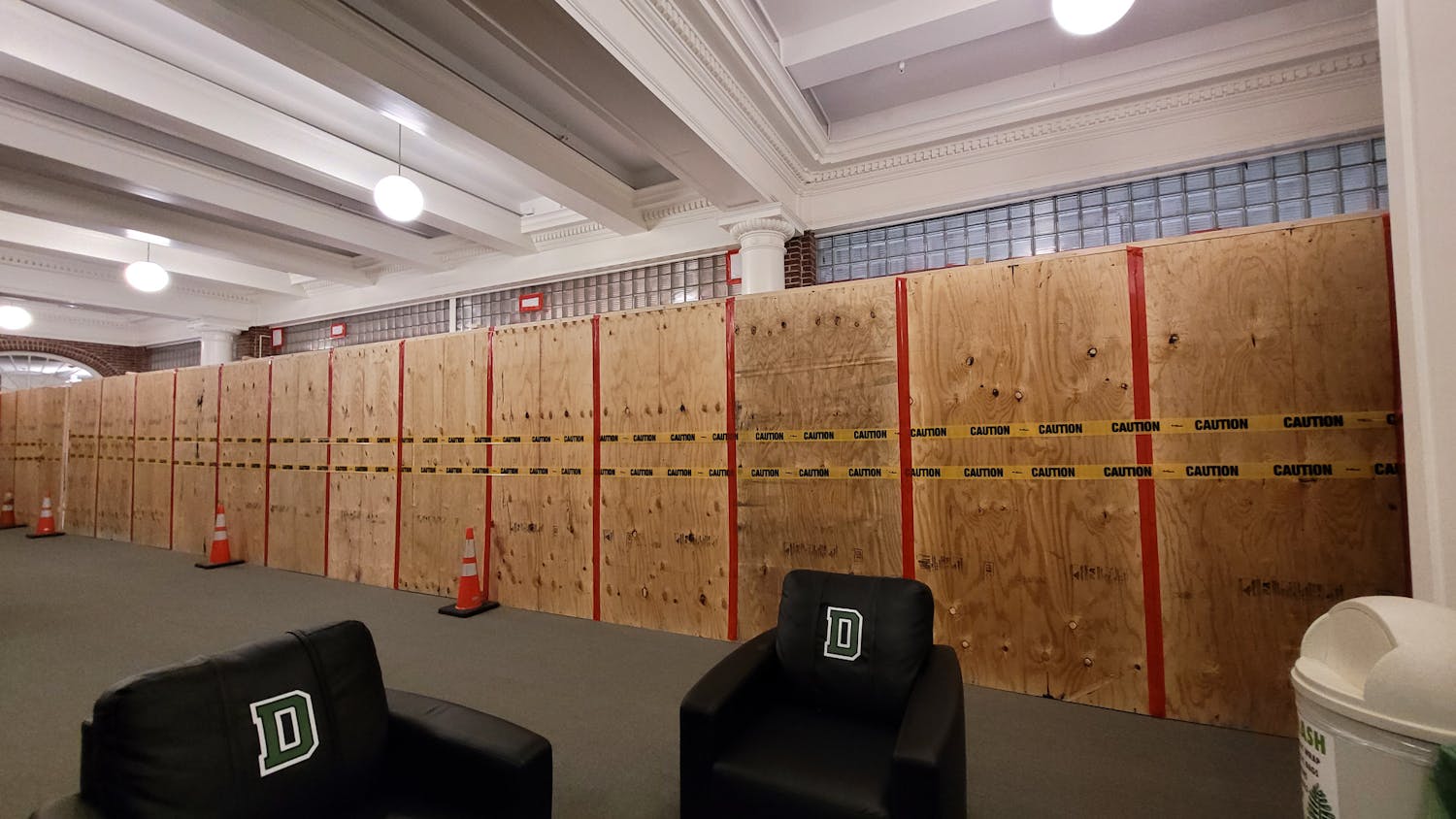Jeremy DeSilva is an accidental anthropologist. The anthropology professor never planned to pursue a career in the field, and never took a single anthropology course in his undergraduate years at Cornell University. After five years in science education at the Boston Museum of Science, DeSilva became interested in human evolution and went on to pursue his doctorate at the University of Michigan, specializing in the locomotion of the first apes and early human ancestors. DeSilva is fascinated by the way fossils can help us understand the past and change the way we view our present human experiences. He primarily studies the human foot and ankle, and his research has helped us understand the origins and evolution of upright walking in the human lineage. He has studied wild chimpanzees in Uganda and Kenya, investigated early human fossils in South Africa and plans to bring his worldwide travel experiences and love of teaching to Dartmouth. The Dartmouth sat down with DeSilva to discuss his passion for paleoanthropology, his current research focuses and the unifying similarities of the human species.
What initially sparked your interest in anthropology?
JD: I’d been at the [Boston Museum of Science] for a couple of years and my boss approached me about updating an exhibit on human evolution. I knew nothing about the subject and she simply said, go learn about it. So I went and bought this book, “Extinct Humans” by Ian Tattersall, and I became obsessed with these skeletons, with the life they had, and how it affects who we are today. I was hooked. Eventually, my boss said you’ve got to go to grad school for this, so I did. A lot of times students will come to me in a panic, changing majors and saying, “I don’t know what I’m going to do.” Often you think there is this one path you are supposed to take, but that path can be disrupted. I think those disruptions can be really healthy and can actually send you on a new path of discovery.
How did you choose to focus your research in your Ph.D. and beyond?
JD: I was doing a lot of my work in Eastern Africa, mostly in Uganda and Kenya studying chimpanzees and how they climb trees and how they use their feet and ankles. I was just finishing my dissertation in 2008, on a group called Australopithecus. The timing couldn’t have been more perfect. At the same time, in South Africa, a researcher named Lee Berger had made this amazing discovery on a new type of Australopithecus that had a foot. He was trying to find someone who had recently done their dissertation on Australopithecines, that he could contact. He contacted me, and I jumped at the opportunity. It was this wonderful moment of being in a science that is constantly changing, where new discoveries really do alter our view of how the world works.
How has this research changed the way you view the world and how others view the world? Why does it matter?
JD: For me, as a researcher, it’s humbling that fossils like this with anatomies I never would have expected were right under our nose the whole time. These fossils weren’t found in some obscure area. They were found in the same region that has been studied for the past 80 years. We now have two species that are entirely different than we would have expected. In terms of what it means for the whole world, it shows humans everywhere that we are part of this incredible story, a very lengthy story in terms of time and that there were all these different kinds of humans that used to live. Yet here we are as the last remaining species. Sometimes we emphasize our differences with each other, but to me, the more important thing is our similarities. Yes, we have such rich cultural diversity around the world and we can appreciate the variation, but we are a single species, one species united through evolutionary processes, united through time. We are actually not that different from one another.
Is there a particular moment from your fieldwork that stands out in your memory or a discovery you made that is particularly salient?
JD: It’s hard to find one. I feel so lucky to do the work I do. The first time I ever saw wild chimpanzee was breathtaking. To have your closest living relative sitting there next to you looking at you and you’re looking at it, was just awesome in all senses of the word. And then a couple weeks later, those same chimps took us down into a valley where we were attacked by killer bees, and that was awful. So I remember that very well!
Nothing beats finding a fossil. This is something that died millions of years ago and when you find it, you’re the first one to set eyes on it and touch it after all that time. I really feel like the human fossils that I work with have these stories to tell, and we owe it to them to tell the stories. There is such an incredible gift that this ancient creature is giving us — its bones — and we can use its remains to reconstruct why we are the way we are today.
The last story that sticks out in my mind is the first time I travelled to South Africa to look at the new Homo Naledi fossils. I’d been in touch with the team that was finding them, and the team had found a little over a thousand fossils. I’ve become accustomed to going to Africa, budgeting a few weeks and spending a full day with a single fossil. I draw it, measure it, scan it, photograph it and do all the analysis that I can. I walked into the temporary research room where these fossils were being kept, and I was so overwhelmed, but in a great way. I was thinking, “How am I going to get this work done in the time I allotted?” But thank God that we have these fossils! I was in there alone with them, and it is hard not to get emotional when you have bones of your own kind. These aren’t elephants or giraffes, this is us — how we used to be or at least a very close relative of ours. It was a moment of taking a breath and soaking it all in. Then you get to work, and you become objective again and you dive in.
So what are your current research focuses?
JD: I’m wrapping up a number of projects. This has been a 10-year journey of studying the foot, ankle and leg of Australopithecus and other human ancestors, trying to figure out how we used to walk. I feel like I am finishing, and I’m feeling good about the research I’ve done. It’s time to compile it all. So my next project is to write a book. I want to write a popular science book on bipedalism, and why we walk on two legs, because it’s actually really weird. There’s no other mammal that does it. So why do we do it? Who started doing it? Why do they do it? What have we learned about bipedalism variation?
What brought you to Dartmouth?
JD: I love the idea of a small school. I love the outdoors and the idea of a college out in the middle of nowhere. And everyone here is focused on this place and what is happening here. That can be a little insulating, but in some ways it’s wonderful that everyone is here focused on learning. I loved the emphasis this place had on teaching. I think my research benefits from my teaching and my teaching benefits from my research. The best questions my students ask in class are those that I don’t know the answer to. Sometimes that leads to research. And for me personally, it was about raising my family in a small New England town. I’ve only been here a year, and in some ways I feel like I’ve always been here. We’ve integrated and been welcomed into the community so wonderfully. It’s hard to imagine that this wasn’t always my life. This will be the next 30 years of my life, here doing this research, working with students and raising my family.
This article has been edited and condensed for length and clarity.



